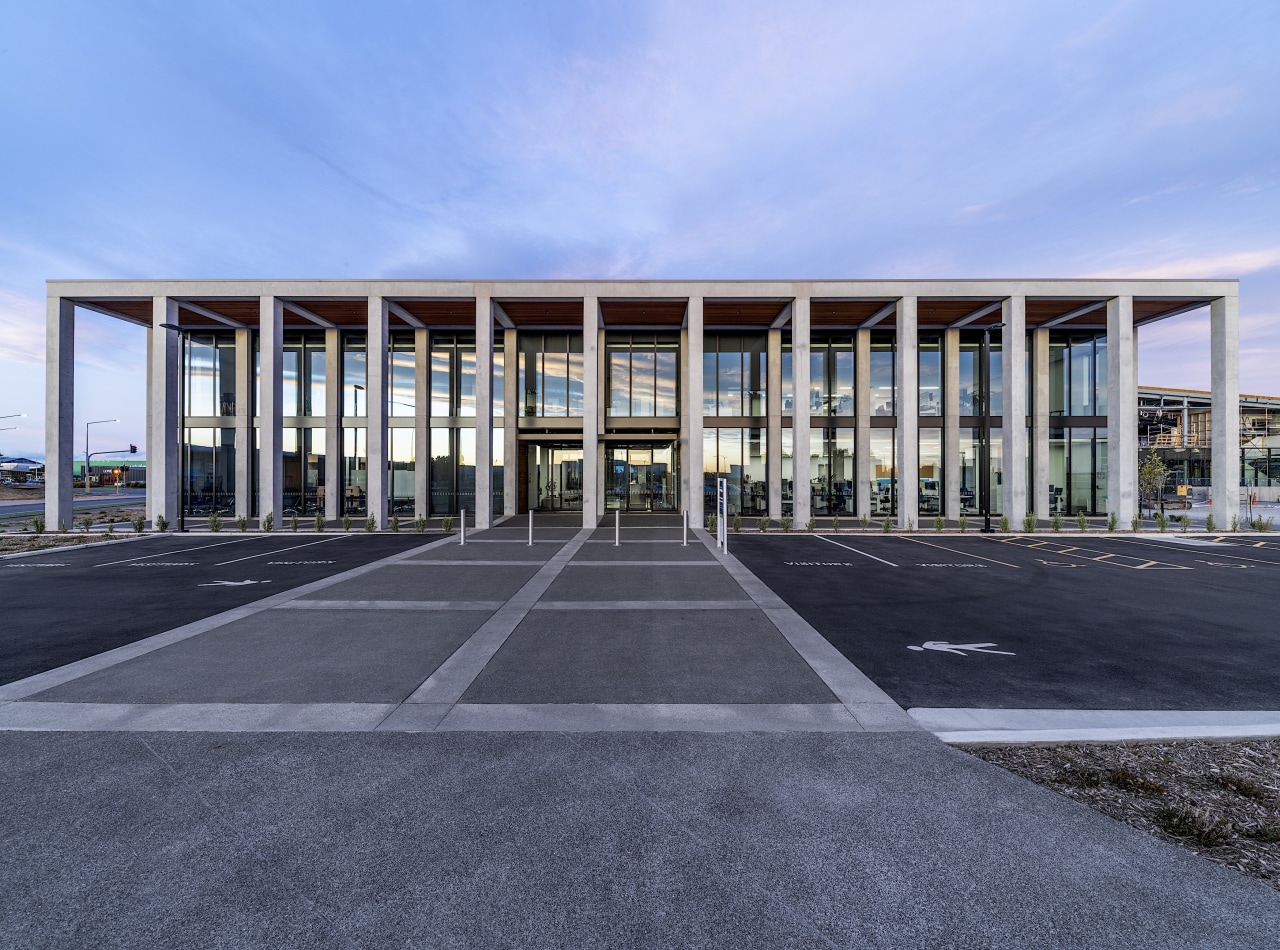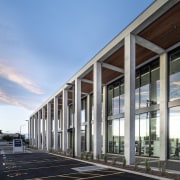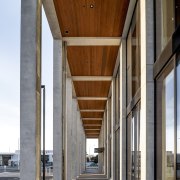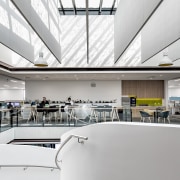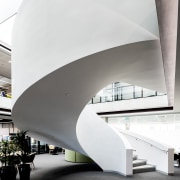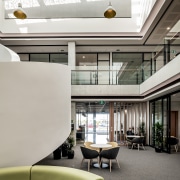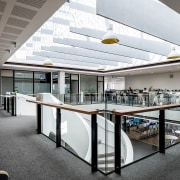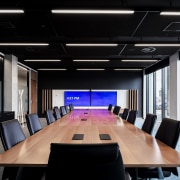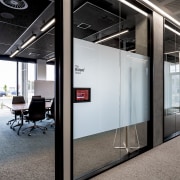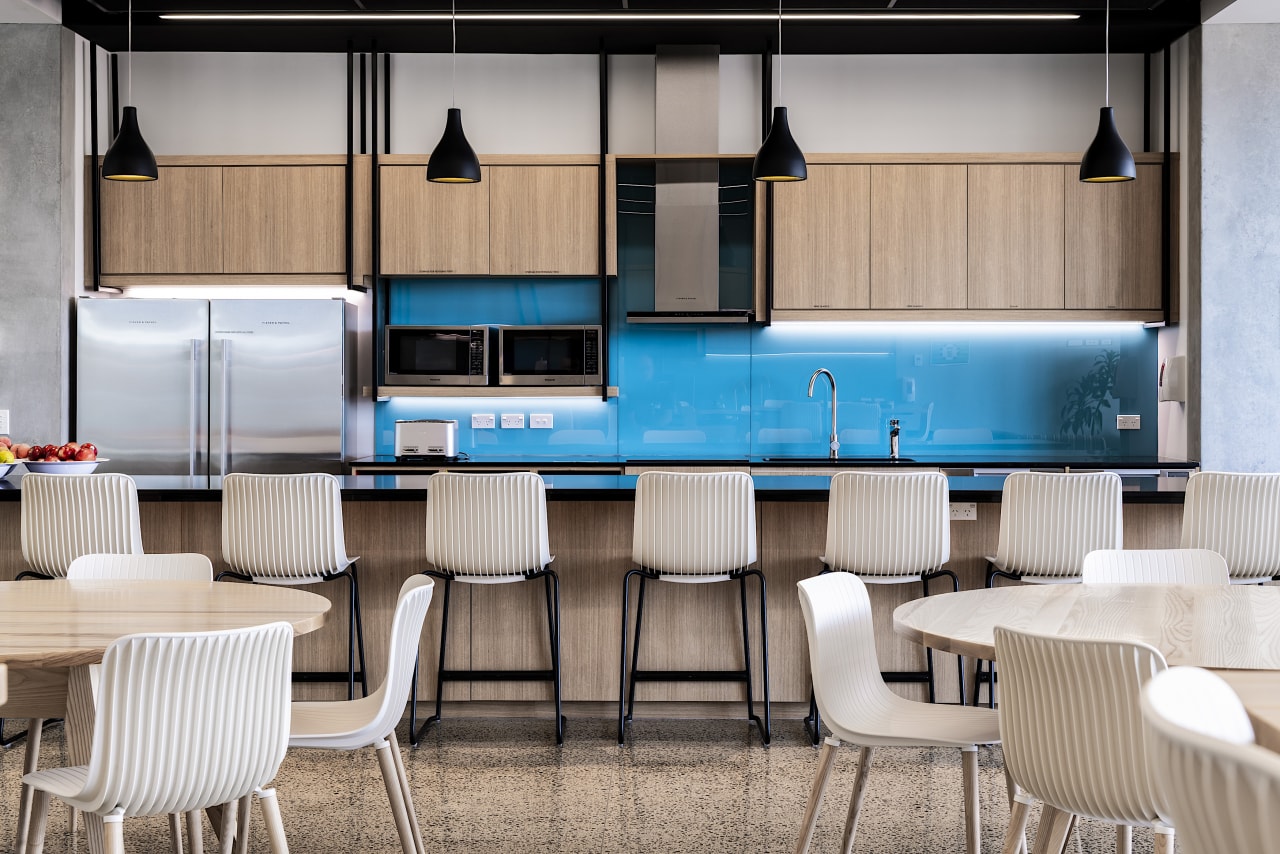Proud face meets responsive heart
Both impressive and approachable, the new headquarters for PGG Wrightson has dramatic facades front and back together with an interior that's all about versatility and connections
Designed by Wilson & Hill Architects
From the architects:
The new head office building for PGG Wrightson is ideally positioned at the entrance to Christchurch International Airport. The agricultural supply business is entered via a side street directly off Memorial Avenue, meaning anyone flying in or driving has easy access to the dramatic two storey building.
Designed by Wilson & Hill with design director Chris Wilson at the helm, the building essentially has two front elevations each featuring two-storey colonnades of precast concrete columns – one facing Memorial Avenue and the other facing the carpark on the other side where most visitors and staff enter the building from.
The concrete columns reach to the very apex of the building, maximising their sense of height – this creates the drama befitting a head office building.
However as well as being impressive the building also had to avoid being overwhelming to visitors and as such the entry to the building has been designed as a low scale space providing a welcoming feel.
Plus the cedar soffits and panels add a natural, almost earthy ambience, as does the building’s concrete base floors when you enter.
Once inside, visitors directly to the suite of meeting rooms without entering the office environment.
Beyond the entry foyer staff enter a central atrium space that is connected to the building’s suite of meeting rooms and the staff café – avoiding entering the office spaces. The building comprises two 1500m² floors.
The square atrium is the hub of the roughly square building and features a large cutout allowing sunlight to penetrate into the heart of the building.
Giant panels hang in this space, both providing solar control and also acoustic control – the latter was important in a building with gleaming polished concrete floors.
Another feature of the atrium is the circular stair. Made from steel, this was craned into the atrium from above, before the glass ceiling was added.
The open plan office space allows for many different tasks to take place depending on the team occupying the space, it allows for collaboration as well as for focused individual work.
Teams have been allocated to spaces adjacent to other teams that work in a similar way. Plus a range of support space such as meeting rooms and quiet spaces are provided for each team.
With each team working on potentially completely different things, the stairs, circulation corridors and staff café provide places to linger, mingle and even brainstorm.
While the café is just off the atrium, large sliding doors can be pulled back to connect the two spaces and make for a much larger gathering area. This can be further extended when including the outdoor eating space which runs outside the building beyond the café.
Overall the plan has been designed to be an efficient space to occupy while creating a light and spacious environment to work in.
As well as being efficient in terms of facilitating work processes, the building also includes a raft of sustainable features – making it kind to the planet as well as to its day-to-day inhabitants.
The building minimises its energy use by using the following elements:
- A large roof overhang on the North Elevation.
- Minimised windows on the east and west elevation when the sun is low.
- Argon filled double glazing for thermal efficiency.
- A heat exchanger on the ventilation system has been used on the roof to capture the energy in the air being expelled from the building.
- LED lighting throughout the building.
Other healthy features include that the prominent circular stairs promote climbing rather than pushing lift buttons. Plus there is large bike shed and showers on each floor to encourage cycling to work.
In addition lockers are provided for staff who bike to work.
Care was taken when selecting materials for the building, such as the locally grown FSC Southland beech timber which is a feature of the interior. The carpet selection was specified as having to have at least 50% recycled material content.
A large recycling area has been provided in the car park to ensure minimal waste from the building goes to land fill.
And in yet another forward-looking design move, electrical cabling has been installed to allow for future use of electric cars in the vehicle fleet.
Credit list
Project
Architect
Project manager
Interior design
Civil engineer
Quantity surveyor
Roof
Partitioning systems
Tiles
Veneers
Workstations
Kitchen equipment
Developer
Project team
Structural engineer
Construction company
Mechanical and electrical engineer; fire consultant
Cladding
Lift services
Hardware
Flooring
Paints
Reception desk
Story by: Trendsideas
Photography by: Steven Goodenough
Home kitchen bathroom commercial design
Personality plus
Classic looks, contemporary efficiency
Diving into nature
